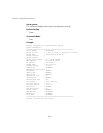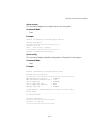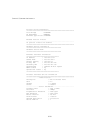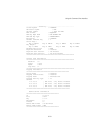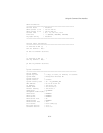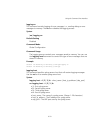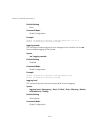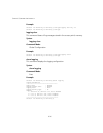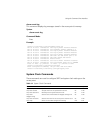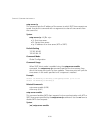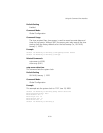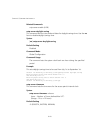6-33
Using the Command Line Interface
logging on
This command controls logging of error messages; i.e., sending debug or error
messages to memory. The no form disables the logging process.
Syntax
[no] logging on
Default Setting
Disabled
Command Mode
Global Configuration
Command Usage
The logging process controls error messages saved to memory. You can use
the logging level command to control the type of error messages that are
stored in memory.
Example
logging host
This command specifies syslog servers host that will receive logging messages.
Use the no form to remove syslog server host.
Syntax
logging host <1 | 2 | 3 | 4> <host_name | host_ip_address> [udp_port]
no logging host <1 | 2 | 3 | 4>
• 1 - First syslog server.
• 2 - Second syslog server.
• 3 - Third syslog server.
• 4 - Fourth syslog server.
• host_name - The name of a syslog server. (Range: 1-20 characters)
• host_ip_address - The IP address of a syslog server.
• udp_port - The UDP port used by the syslog server.
Outdoor 11a Building to Building (config)#logging on
Outdoor 11a Building to Building (config)#




